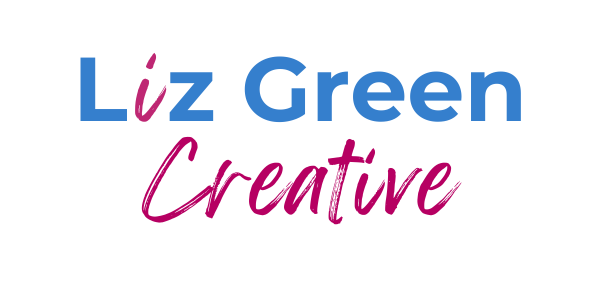Ever found yourself staring at a blinking cursor floating in a sea of white without a single idea to write about?
You are NOT alone my friend…

Yep! Even professional copywriters, content creators and best-selling authors have had this hair-pulling experience at least once.
Usually way more than that.
So when you’re trying to bang out marketing content for your business – there’s a pretty good chance that blank screen will trip you up, drain your inspiration cup or…
Send you to scour your to-do list for something more rewarding like – teaching your cat to bake cupcakes.
The thing about copywriting is – it’s not simply creative writing. I mean – sure – creativity is a key ingredient. But it’s really a much more strategic form of writing.
At its core – copywriting is about convincing a specific person to take specific action – that will deliver a benefit for them (and you).
When you get stuck with the writing – it’s often because you’re missing something practical. (And no – I’m not talking about AI here)!
The *something practical* that I recommend (and every good copywriter relies on) is good old dependable research.
Specifically – 3 types of research or, my 3 Cs of captivating copywriting…
☆ Client Research (all about you and your business)
☆ Competitor Research (all about 3-4 other businesses in your niche or industry that have similar offers and similar customers to you)
☆ Customer Research (all about your ideal customers, your existing or past customers and your competitors’ customers)
Ughhh – copywriting research doesn’t sound exciting!

Haha – I hear you. Before I became an in-demand copywriter and strategist – that was my reaction too!
Especially as I’d been told (more than once) to keep the research phase of my copy projects as short as possible – and spend more time on the writing.
That advice made sense until I discovered that – the quality of your research affects the quality of your copywriting. Every time. Without exception, because…
Research gives you clarity about your audience, your offers and your messaging.
So – far from slowing you down – it simplifies and speeds up the writing process.
Writing gets easier. Faster. Better.
My 3 Cs for captivating copy…
If you’re already thinking, that’s all fascinating Liz but – how do I even get started?
Don’t worry, I’m about to dig deeper.
1. CLIENT research:
When I start working with a new small business client, I want to learn everything possible about them. So I dig into their business and their brand.
From their story, mission, vision and values, brand identity and voice to their services or offers. I explore serious stuff like wins, losses and future goals – as well as quirky fun stuff like – their favourite cake!!.
Now – if you know everything about your brand identity exists inside your mind – that’s not unusual for personal brands and small businesses. Especially if you have grown organically.
So, this is a great opportunity to bring it all together in a comprehensive brand guide that will make it easier for you – or someone you hire – to write consistent and effective copy.
(If you haven’t created a brand guide before, check out my personal brand resources to help you with this).
2. COMPETITOR research:
This is where you discover if what you think sets you apart from your competitors actually does…
When you look closely at 3-4 businesses that have similar offers and a similar target audience to you – you can see whether your messaging really is that different.
I usually start by comparing and reviewing website Home and About page elements like:
- key and secondary messaging
- the features and benefits they focus on
- what they’re not talking about because that can be just as or even more insightful
- how they talk to – and about – their clients
Look for any gaps in their messaging – what feature or benefit can you talk about that they don’t? What can you use to highlight your point of difference?
It’s also helpful to see if your competitors have social proof and how they use it to support their messaging – which leads nicely into….
3. CUSTOMER research (aka Voice Of Customer):
One common small business copywriting mistake I see is messaging that’s based on what the biz owner wants to share and thinks is important for their ideal clients to know
A more effective approach is to get curious about how your clients or potential clients see the world…
The specific problems, pain points or desires they have. Plus the specific transformations they want. So you can truly understand what they need to know about your solution before they feel ready to buy.
Even if you think you already know all of this – the best way to be certain is to ask.
Back in 2021, I conducted Voice of Customer (VOC) research for an accounting business with a strong brand identity. They knew their target audience and communicated really well with them.
So they couldn’t believe it when my VOC research revealed that while they genuinely understood most of the issues their dream clients wanted resolved…
They had overlooked the ONE pain point their target audience cared about above all others.
It just seemed too obvious.
Their competitors weren’t focused on it either. Yet so many of their clients (and their competitors’ clients) talked about it being their biggest concern. There was a clear pattern.
So when the accounting business highlighted this pain point in their messaging, they were able to stand out as a brand that understood their clients, which helped to build trust and deeper connection!
That’s the beauty of VOC research – it makes sure you don’t assume what’s important to your ideal clients. And helps you gain clarity about the actual reasons people need and want your service or offer.
But that’s not all…
Voice of Customer research can strengthen your copywriting and make it more relatable
VOC also gives you the exact language people use to describe the pain points you solve, your services and offers and the experience of dealing with your business (or a similar business).
With this research in your back pocket, you can sharpen your key messaging. Use the same language your target audience uses. Then write relatable copy that attracts, speaks to and retains your ideal clients.
Here are three different ways you can collect VOC research from a specific target audience:
☆ Surveys – depending on your goals and your engagement with your existing, potential or past clients, you can ask 1 question or many (be mindful not to take up too much time – I tend to stop at 10). Check out my blog about the power of customer surveys.
☆ Interviews – give your survey participants the option to identify themselves and volunteer to chat with you 1:1 for even richer results (again, an incentive can increase participation – along with being clear about what’s expected).
Interviewing people is a skill – if you want useful research results, how you ask a question is just as important as what you ask. If you’re not confident – consider hiring someone experienced to do it for you!
☆ Testimonials – revisit your testimonials and online reviews to learn more about pain points, transformations and – once again – grab that all important VOC. (You can also do this with your competitors’ reviews if they have similar offers and target audience).
You asked – they answered. What now?
The next step is the key to organising and speeding up your writing but… Not all of the VOC research you collect will be useful.
Look for patterns and recurring themes that relate to different stages of the customer journey, like:
- before state – what was happening before they hired you?
- objections – what was preventing them from choosing you?
- expectations – what was their previous experience using a similar service?
- experience – what was it like working with you?
- results – what outcomes did they achieve with your help?
- transformation – what has changed for them since working with you?
You can also collect quotable answers or comments. (Sometimes the most relatable copy can be found in the words shared in a customer review or interview.)
Once you’ve organised your VOC into categories – you’re ready to bring your 3 Cs of research together to create your strategy and messaging – then start writing.
So whether your goal is to create content that attracts, connects, informs, nurtures, solves, serves or more… You can use your research to write relatable copy that strategically and ethically moves your target audience to take action.
Whether that’s a click. A follow. A reply. A sign up. Or a sale…

Recent Comments